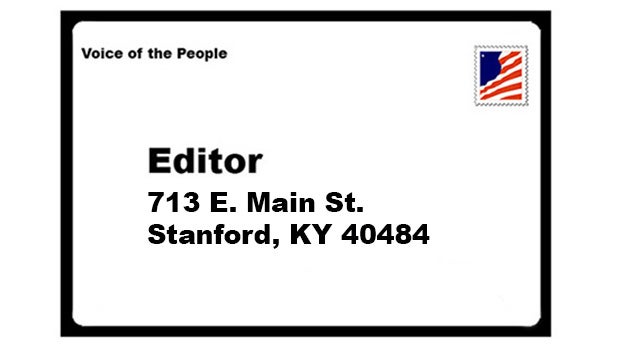Put a stop to harassment
Published 9:06 am Friday, November 17, 2017
The News-Enterprise
From Hollywood to corporate America and from media figures to elected officials, the recent list of accused sexual offenders made public includes the names of some of the most powerful people in the country. Were it not for the abhorrent nature of why their names appear, the list could otherwise be considered a virtual “Who’s Who” of movers and shakers within their industries.
But that isn’t the case, not now that their alleged abusive acts are coming into light as a result of women – and in some cases, men – finding the courage to step forward and speak out.
Sadly, the vast majority of victims of sexual harassment, abuse and assault do not come forward. Too few feel safe talking about what they have experienced. This is understandable. The fear of retribution, retaliation or refusal by others to believe their story only adds another level to their victimization.
How real is the epidemic of sexual harassment, abuse and assault in our country? According to a 2017 study by Cosmopolitan, nine of 10 women in the United States have experienced sexual harassment during their lifetimes. One in three women have been subjected to sexual harassment at their place of work.
More men reported being sexually harassed at work than their female co-workers by a 22 percent to 16 percent margin.
Further, 39 percent of those who say they have been sexually harassed did not report the occurrence because they felt doing so would impact their career negatively. Of those who did report the harassment, 60 percent say they were dissatisfied with the course of action taken by their employer.
Even more sobering, a sexual assault of a women in this country occurs every 98 seconds. Of every six women, one has been the victim of rape or an attempted rape.
These statistics are appalling.
To reverse these trends, first must come the understanding that sexual harassment and assault aren’t nearly as much about sex as about power. Fortunately, it appears societal change may be turning the tides on the power sexual abusers have relied on to prey on their victims.
Social media efforts such as the #MeToo movement on Twitter and Facebook are making it safer for victims to bring the harassment they’ve experienced to light. The viral nature of this and similar efforts also put the companies and industries on notice to move quickly and decisively when abusers in their ranks are made known.
Following the string of allegations made against Roger Ailes and Bill O’Rielly, Harvey and Bob Weinstein, Louis C.K. and Kevin Spacey, one need only look to the actions of Fox News, Miramax, FX and Netflix respectively to see these companies understand the financial liability they face.
In fact, Working Woman magazine reported the annualized loss in absenteeism, reduced productivity, increased health care costs, poor morale and employee turnover can be as high as $14 million for a typical Fortune 500 corporation blighted by sexual harassment incidents.
These growing costs combined with the liability insurance expense to protect against a claim will continue to force corporate America to take sexual harassment more seriously today and tomorrow than in the past.
As social media and the economic liabilities of sexual harassment continue to converge to cast more public scrutiny on this matter, lasting improvement will rely on change at the individual level.
While the balance of positional power in the workplace still tips away from women, more men must hold their counterparts accountable for appropriate and respectful behavior. Those in positions of authority must do all they can to ensure working environments are such that both genders feel comfortable and create an environment to encourage reporting of problematic actions and behaviors observed or experienced. And when these reports are made and investigated, clear and consistent consequences must be applied when and where allegations are proven true.





